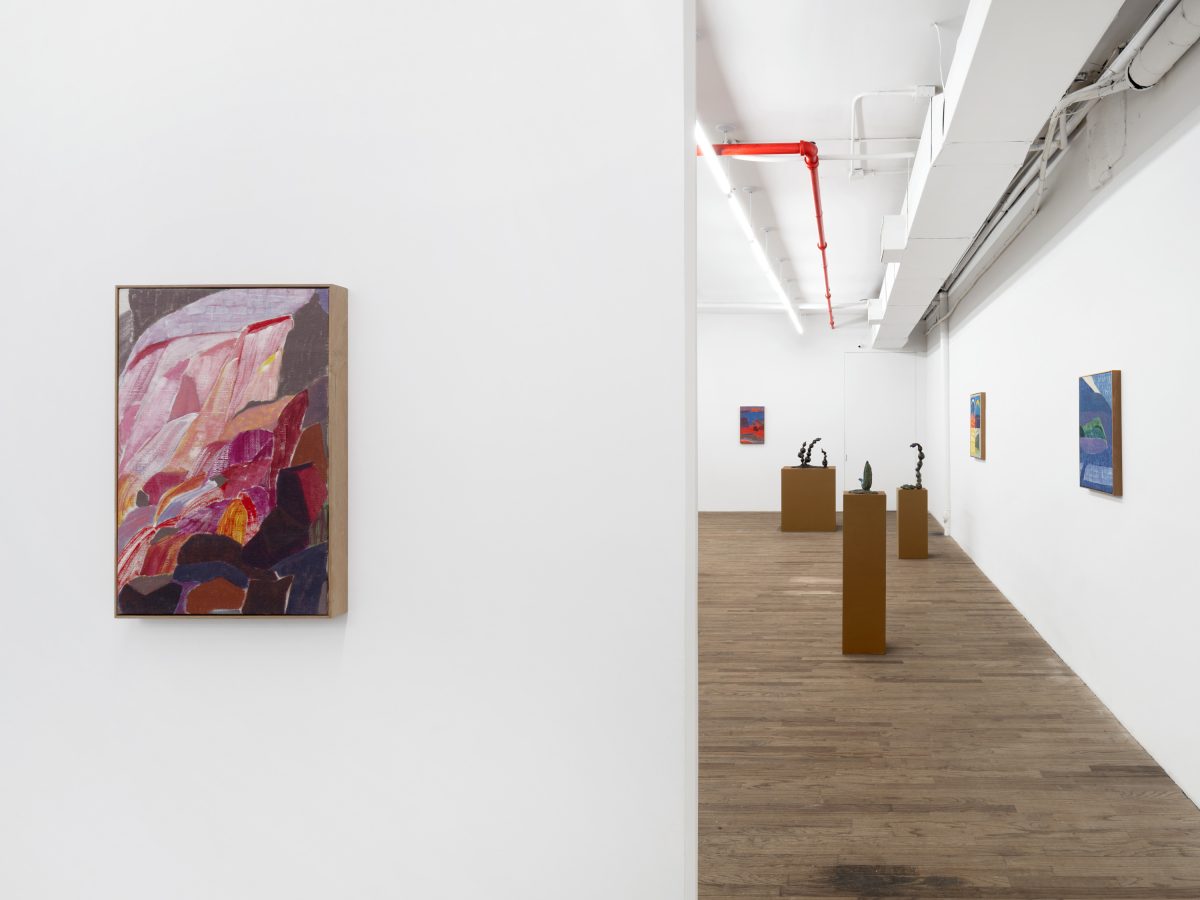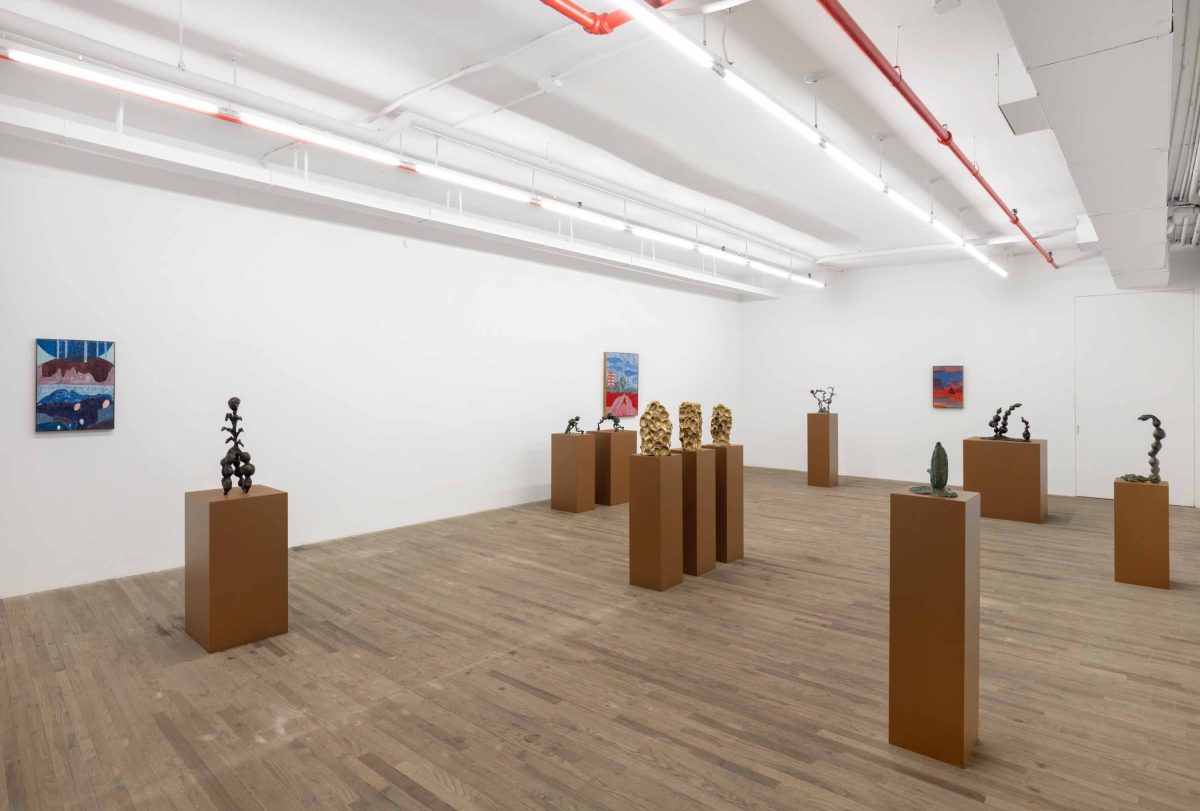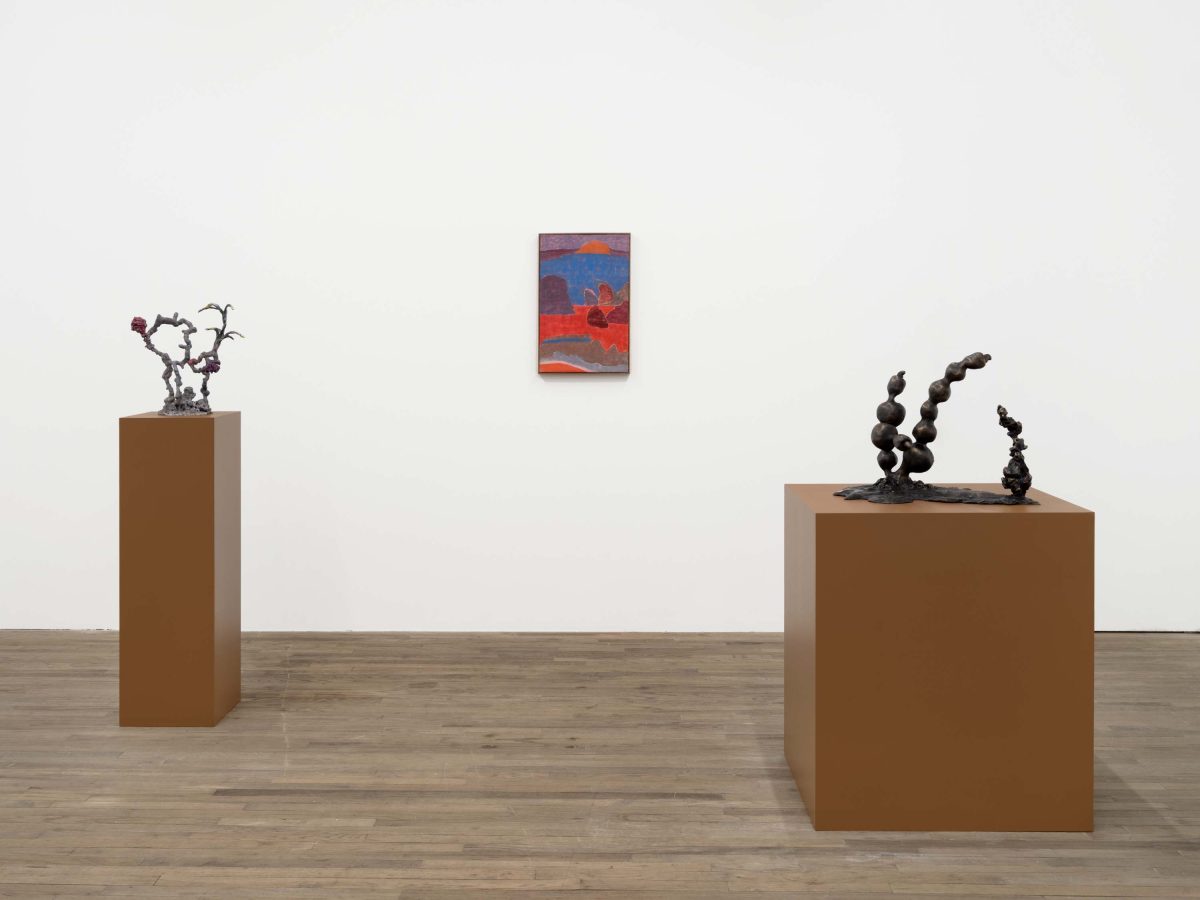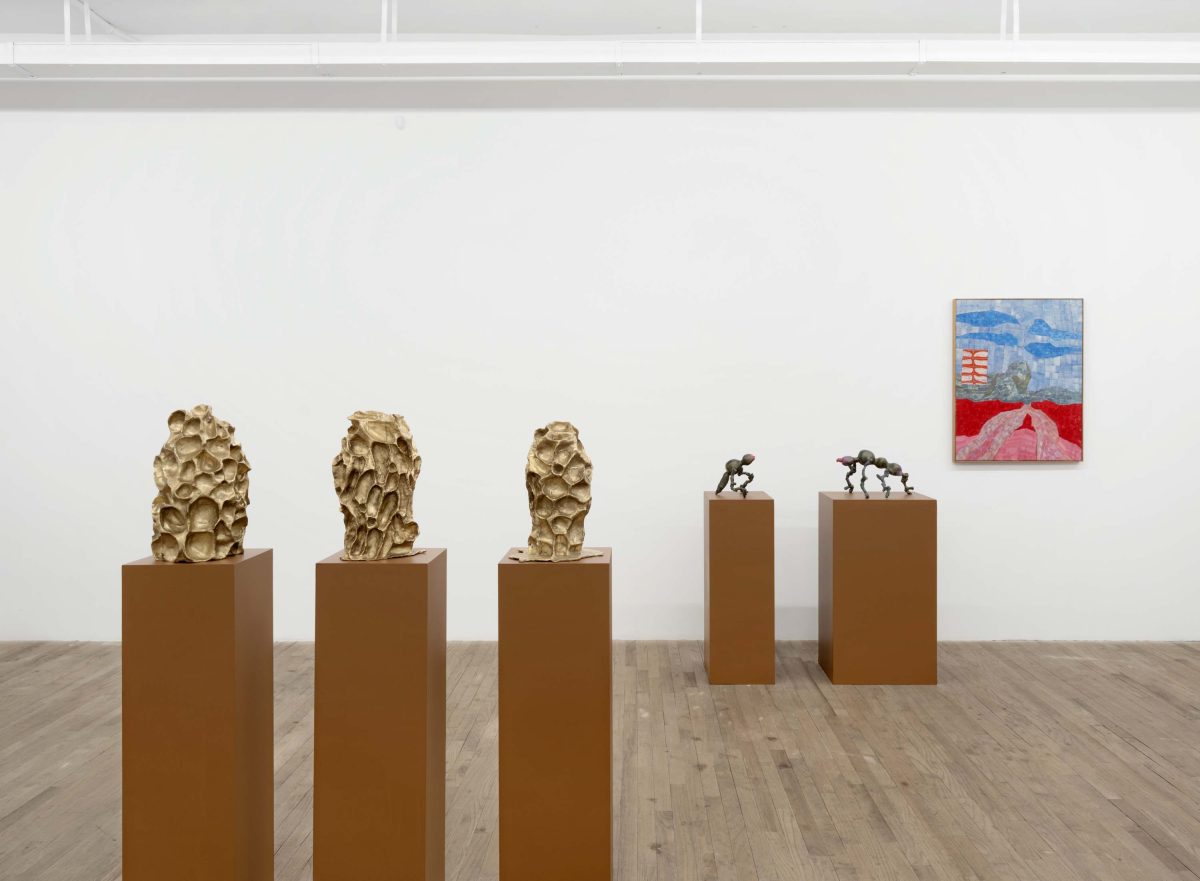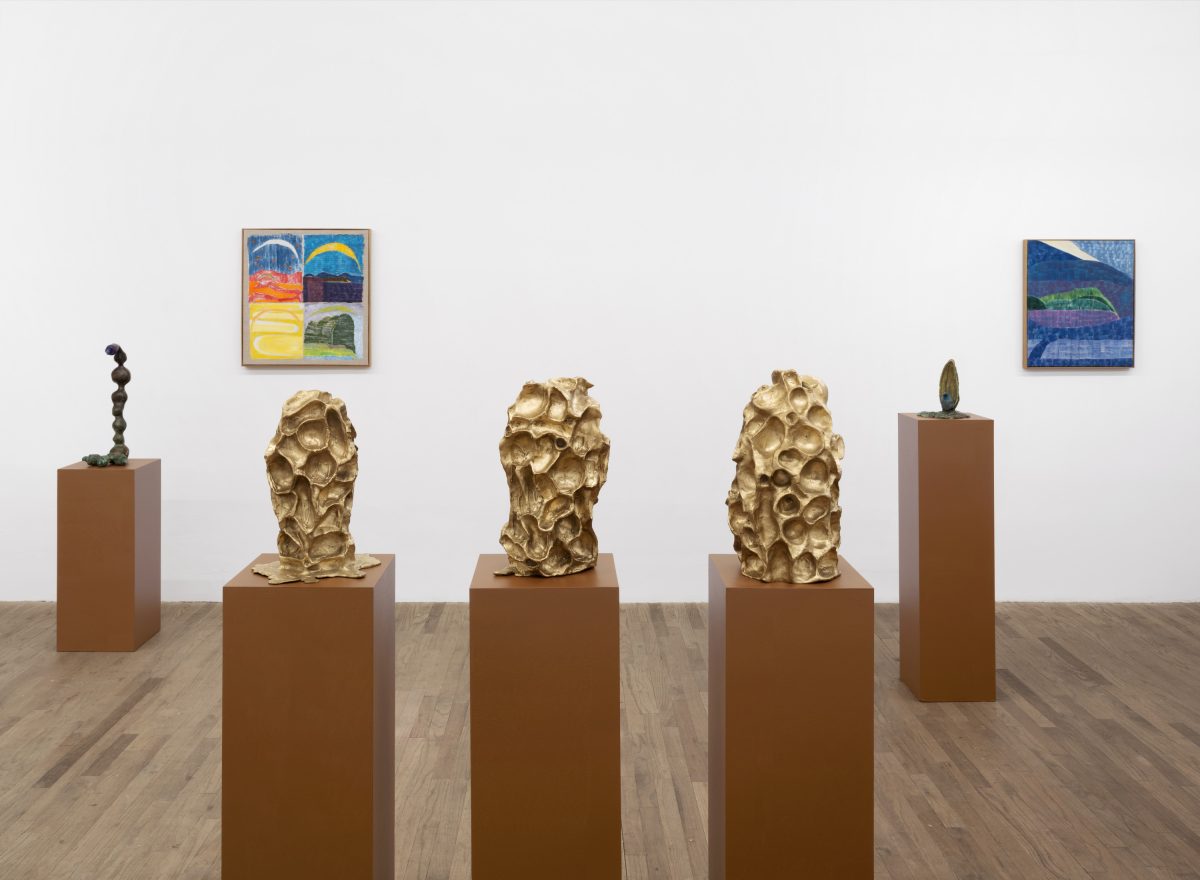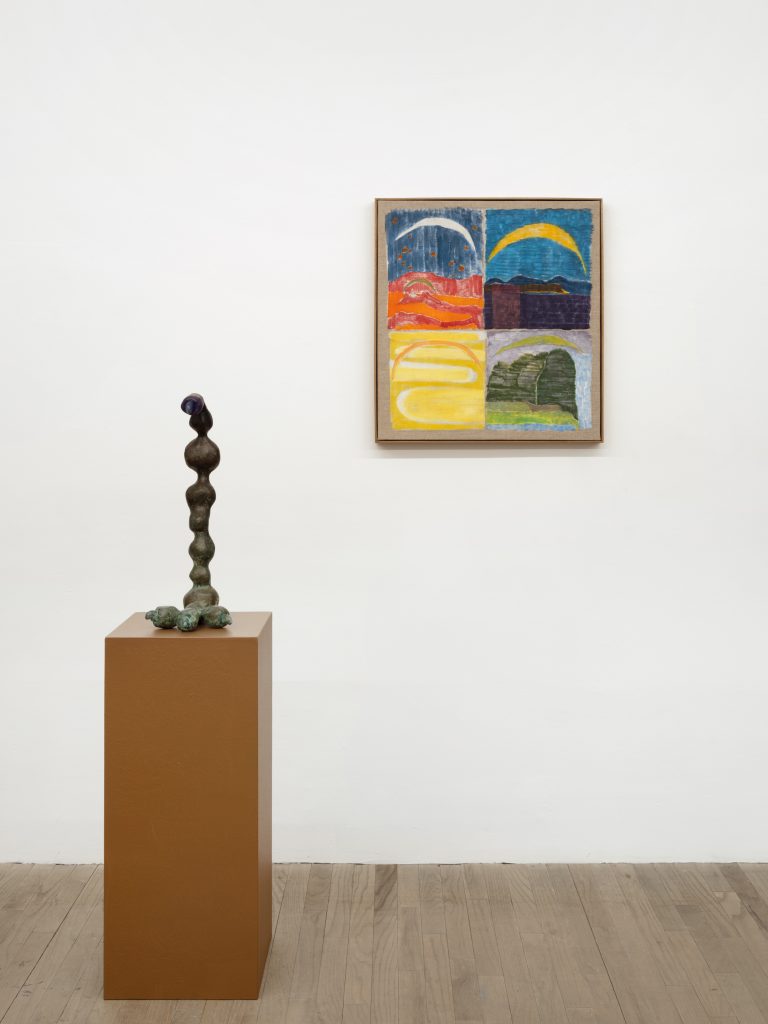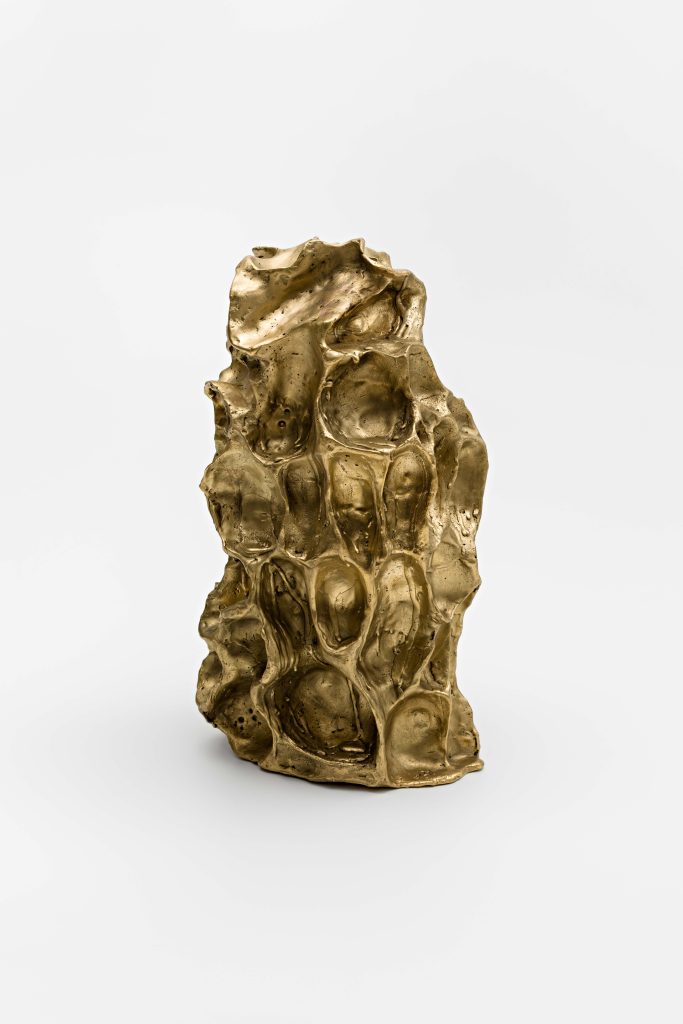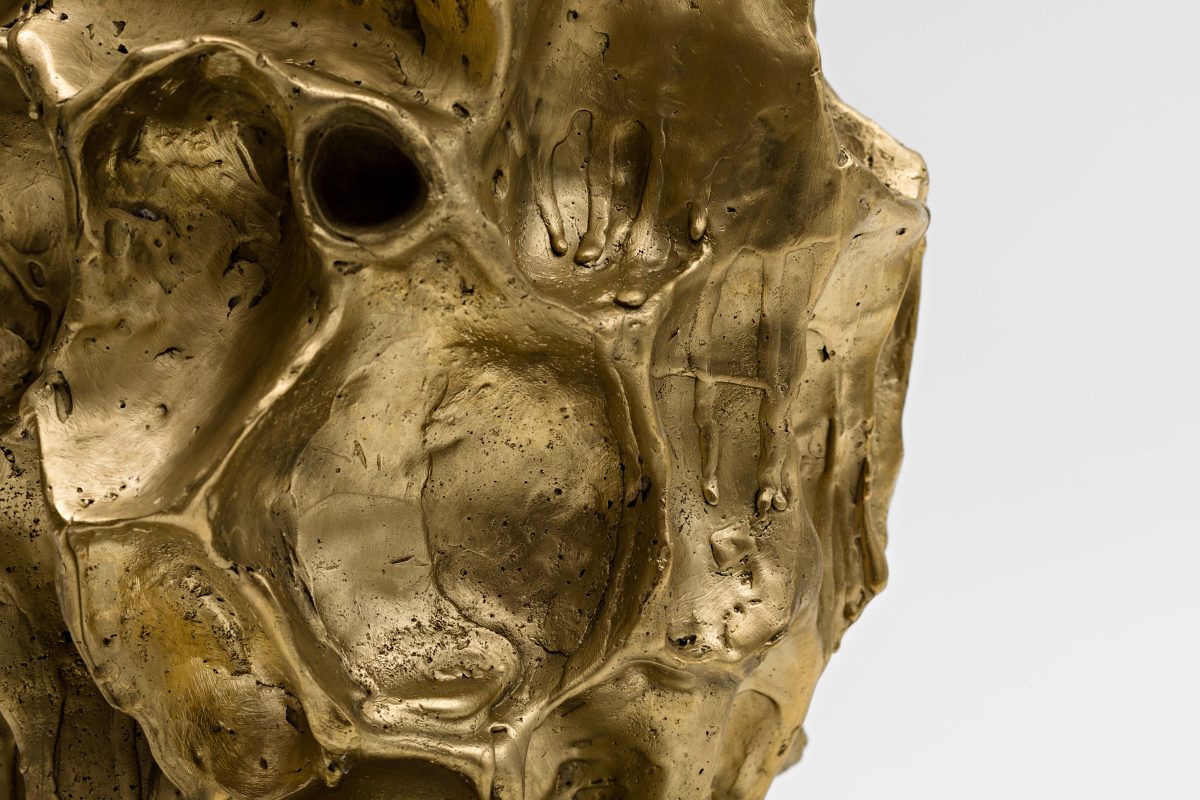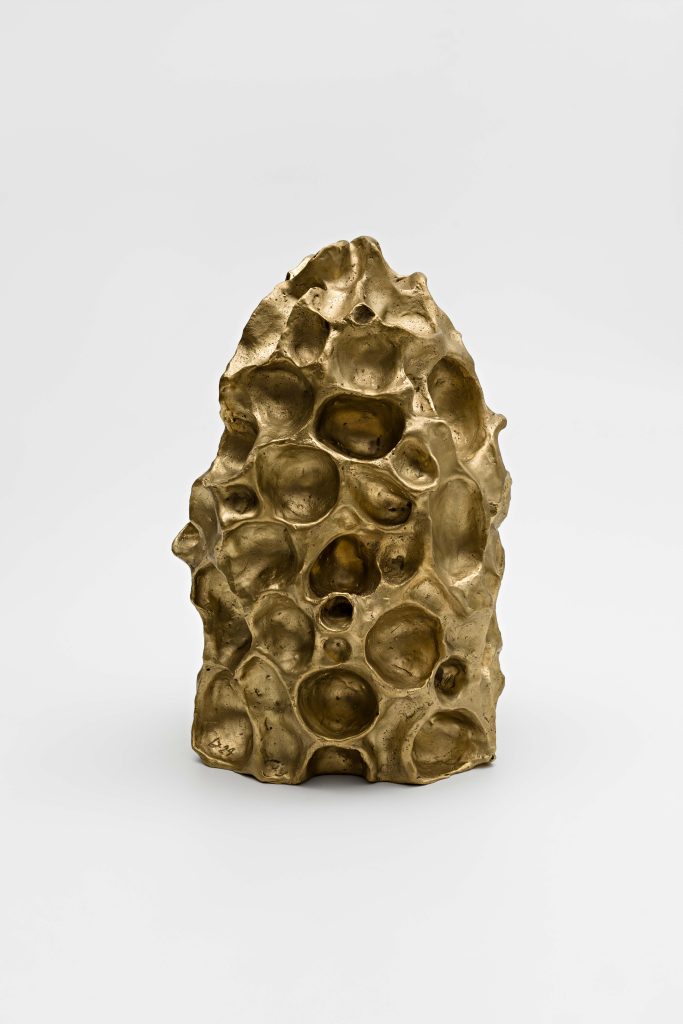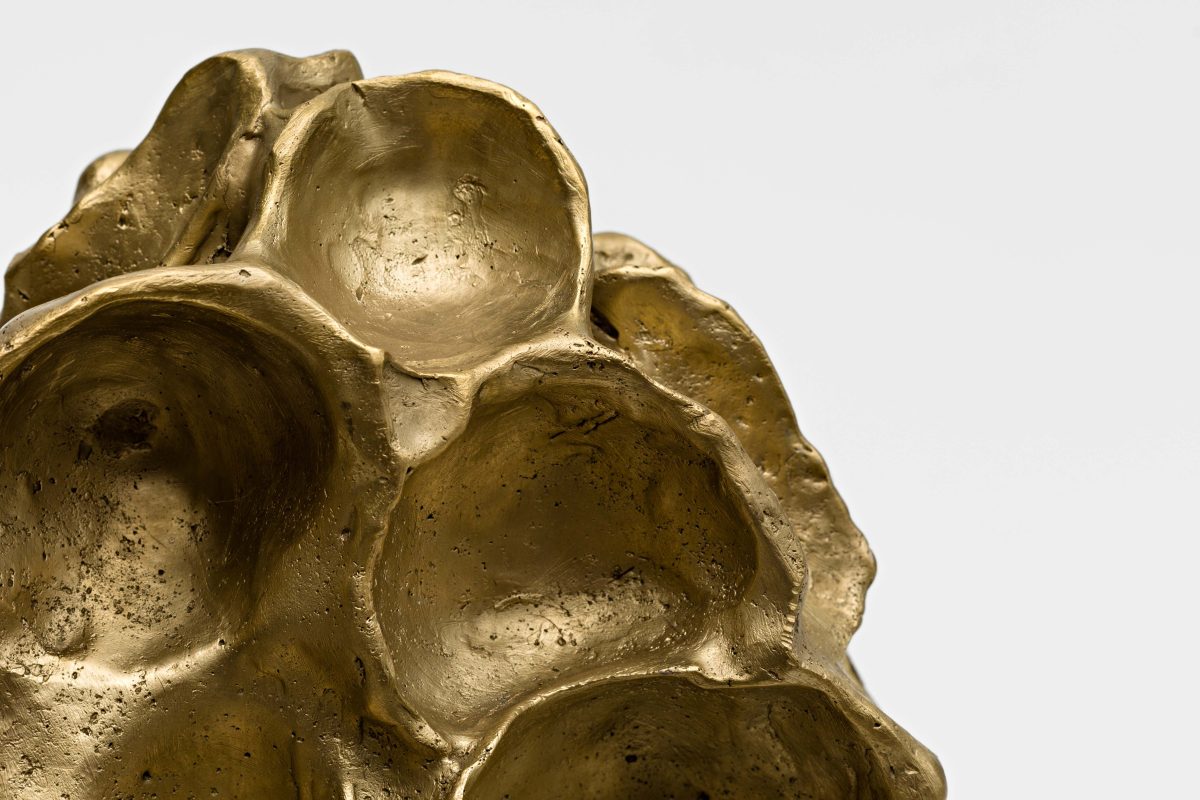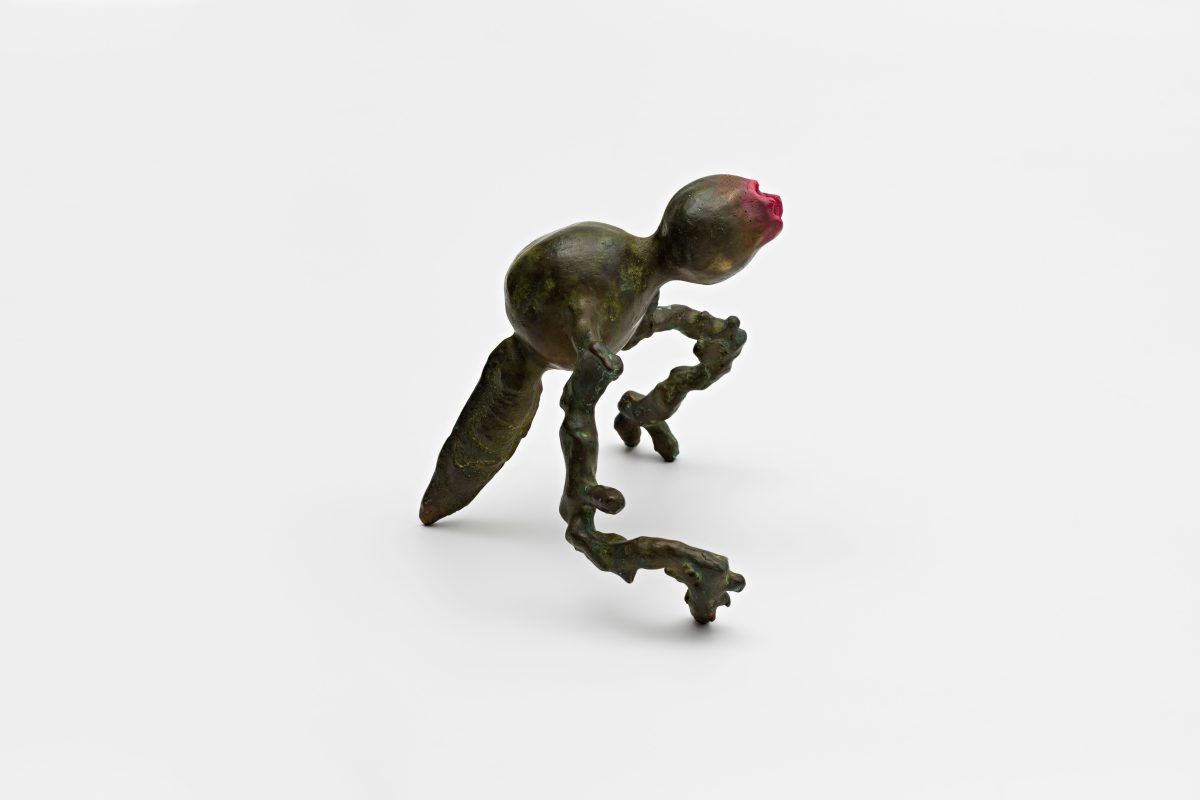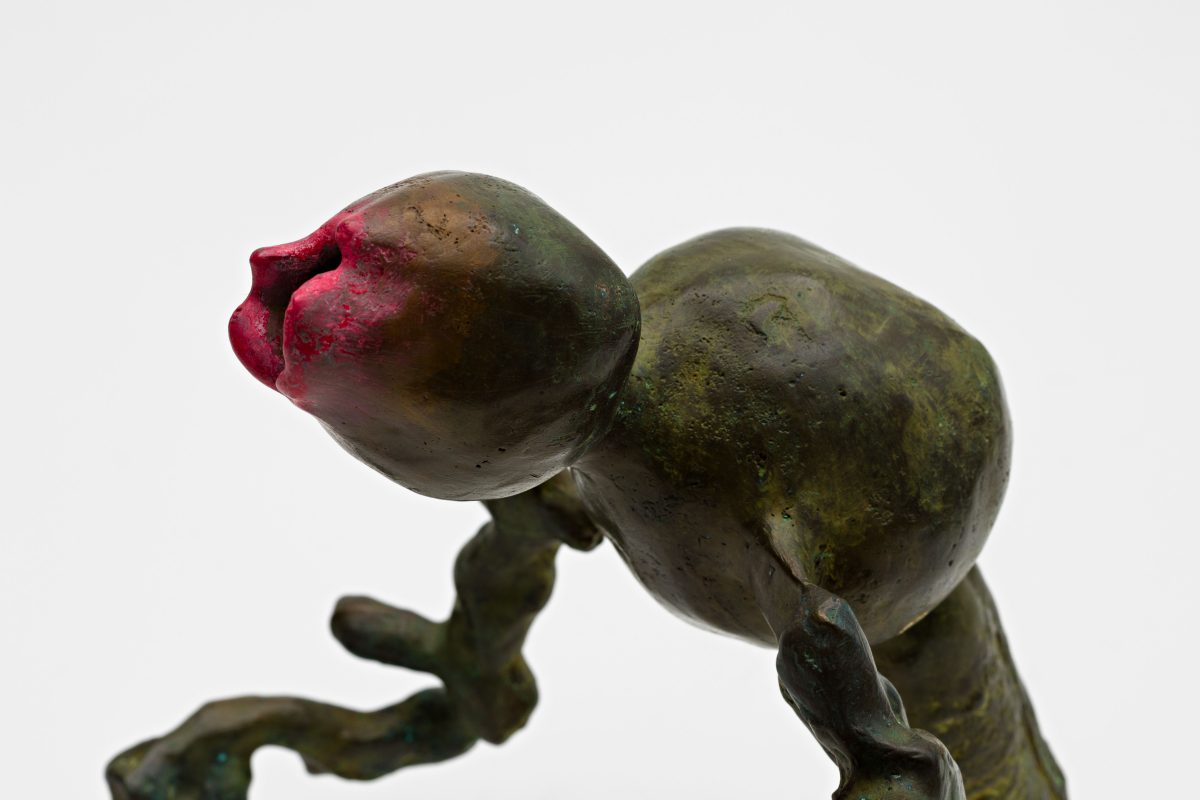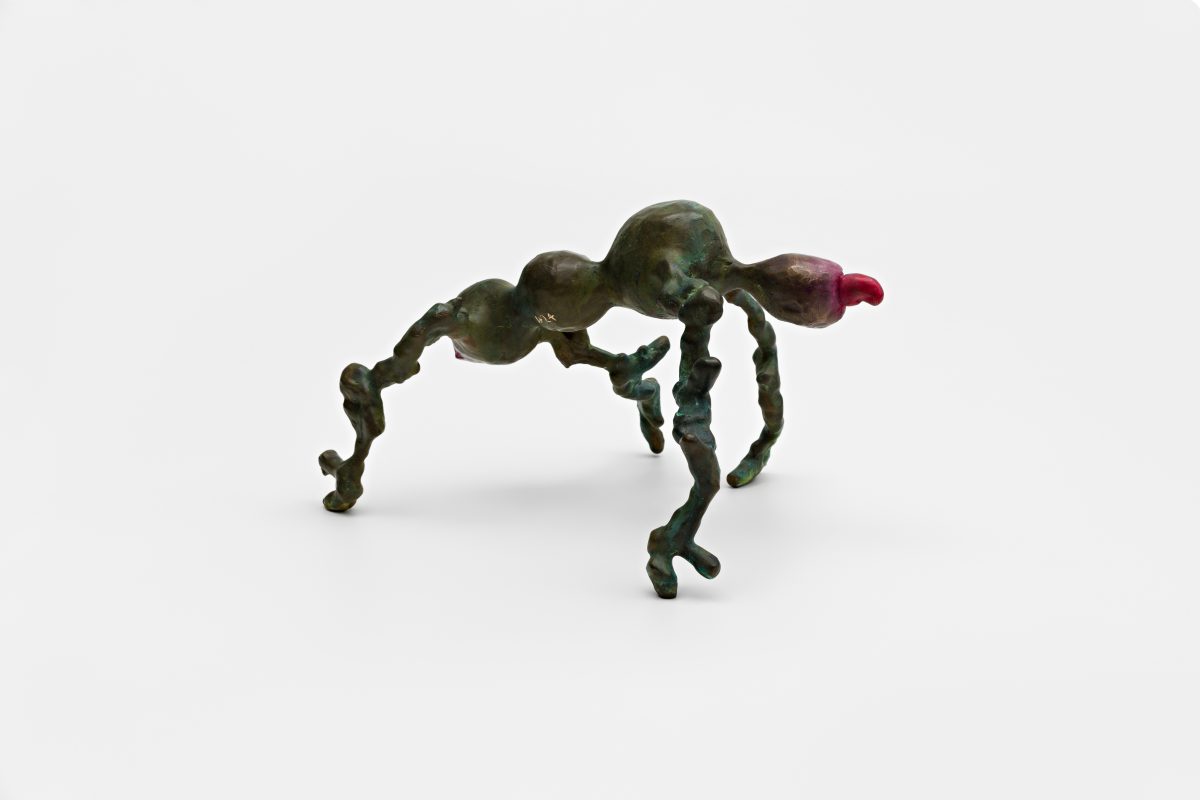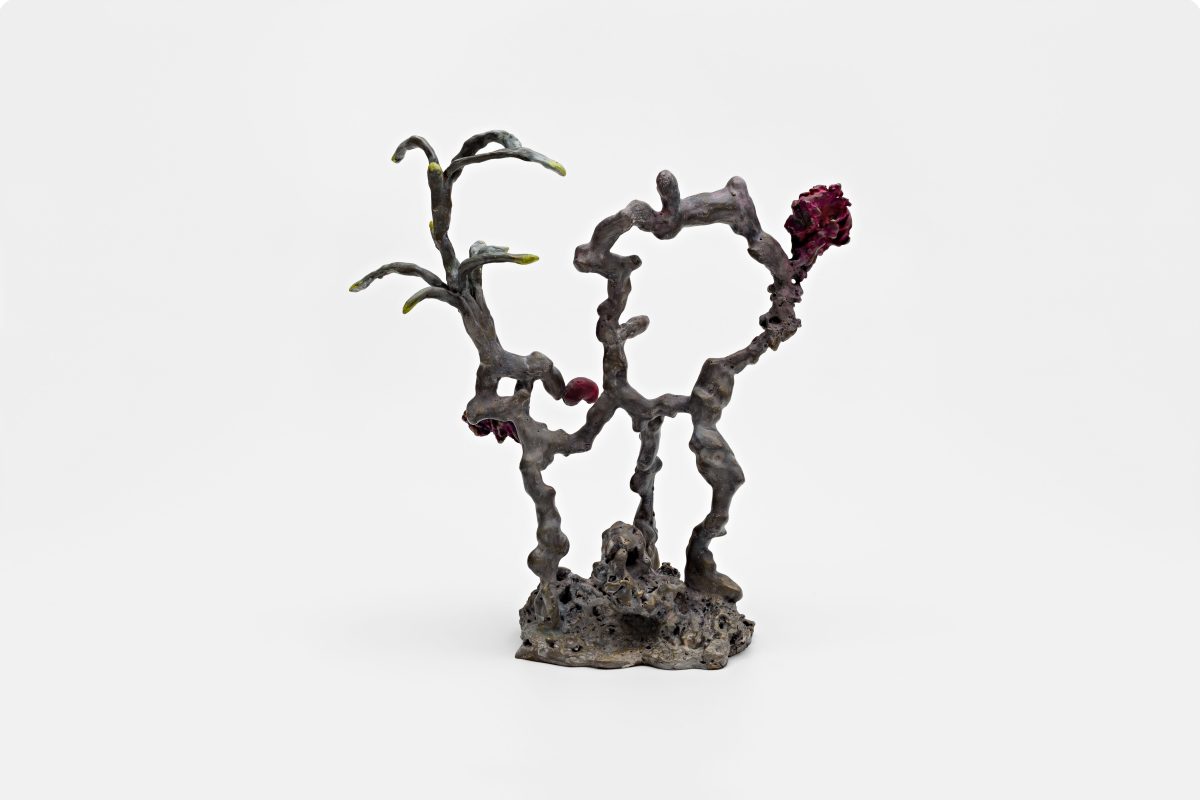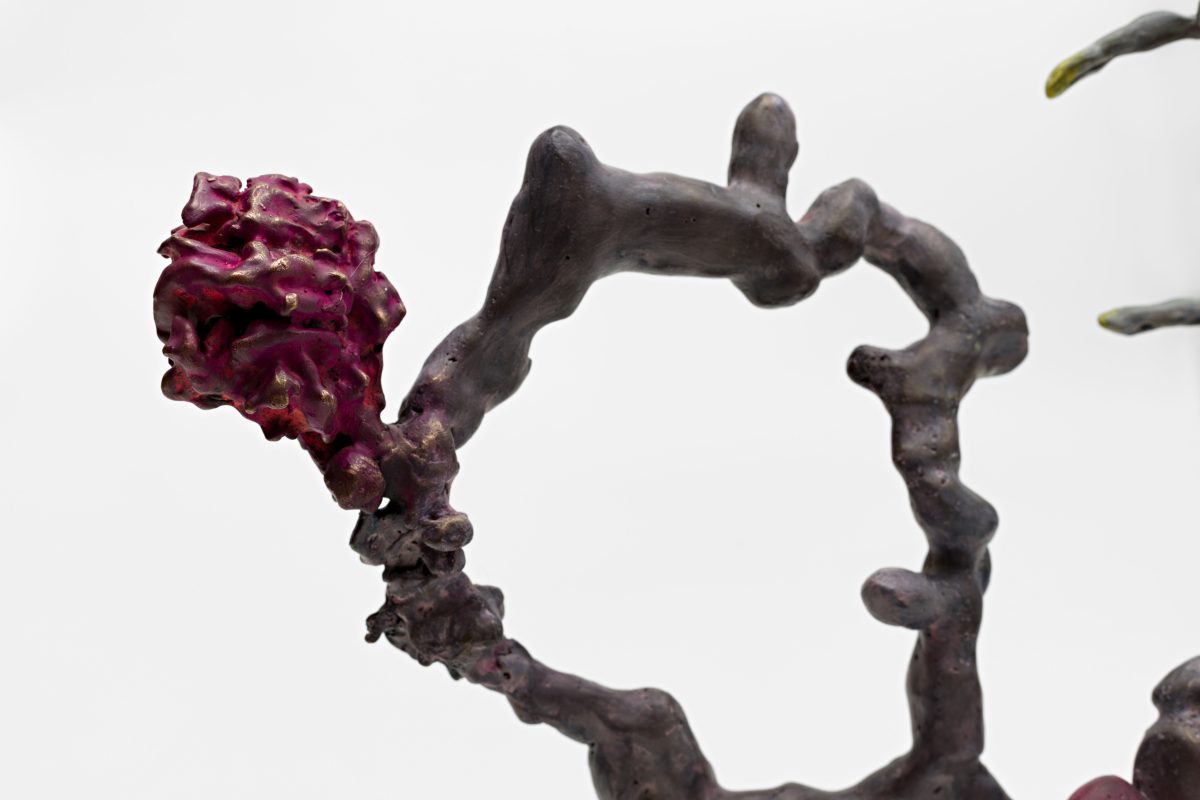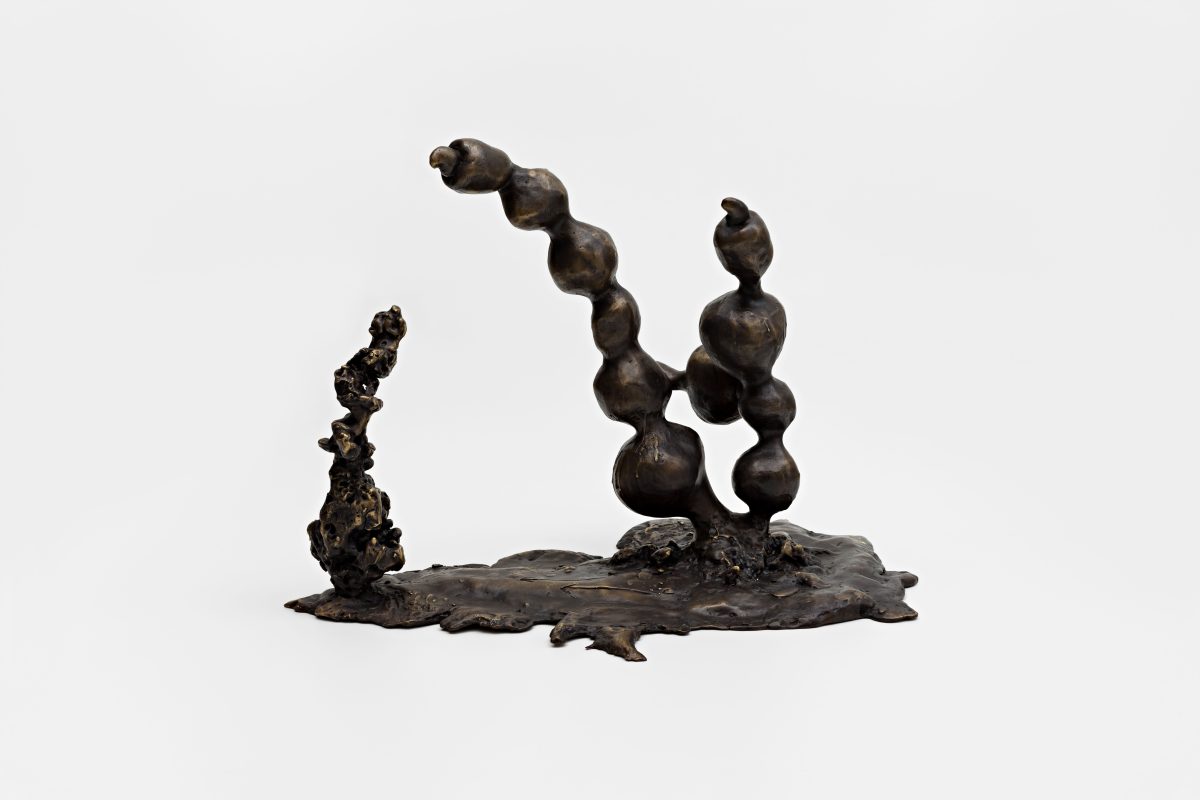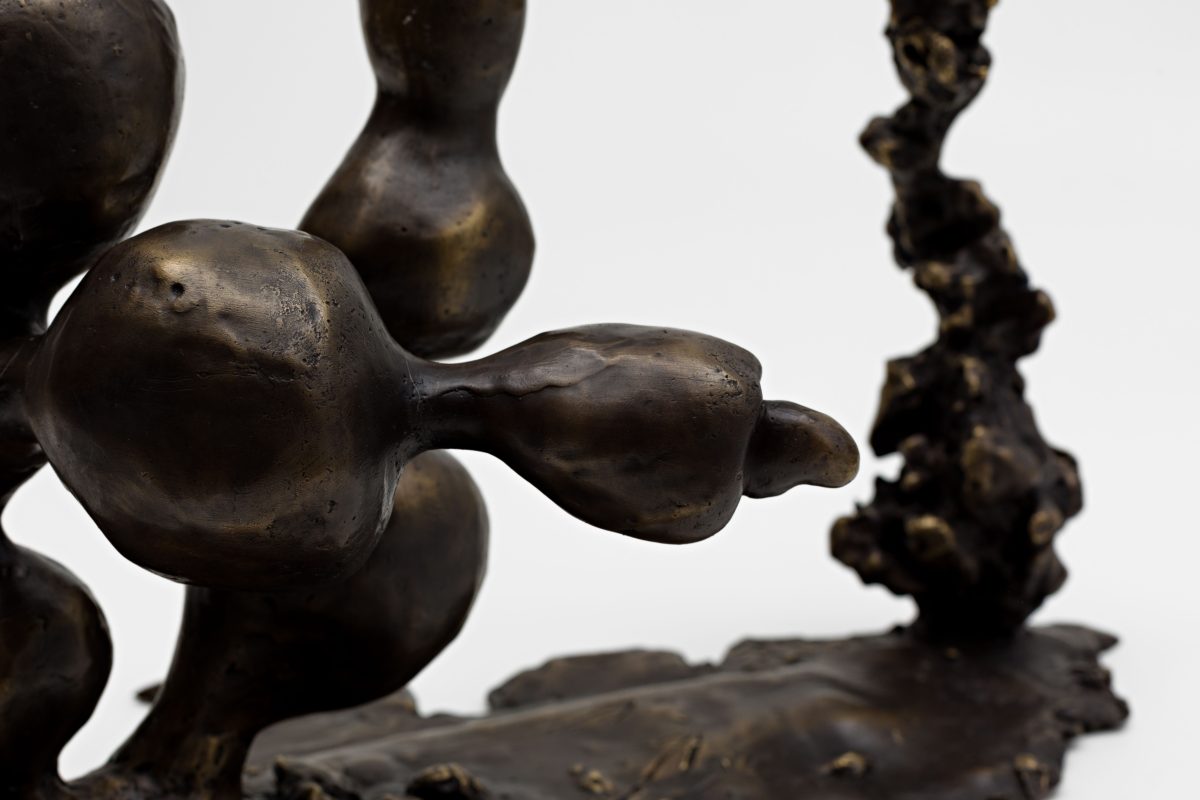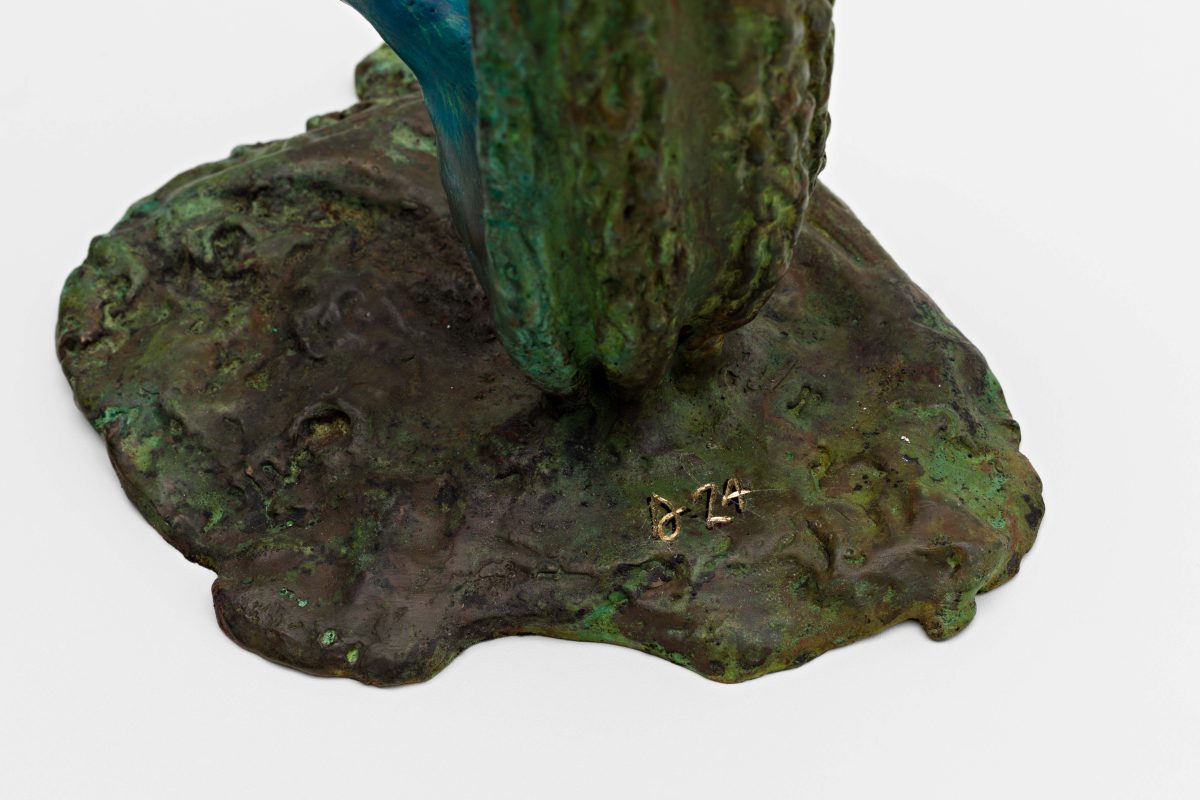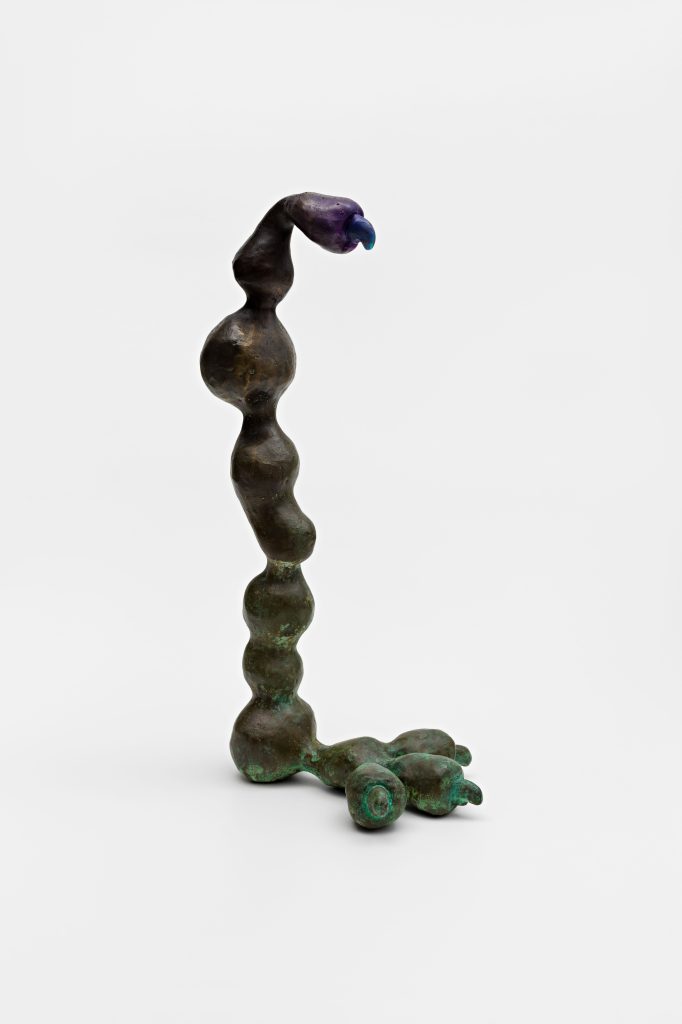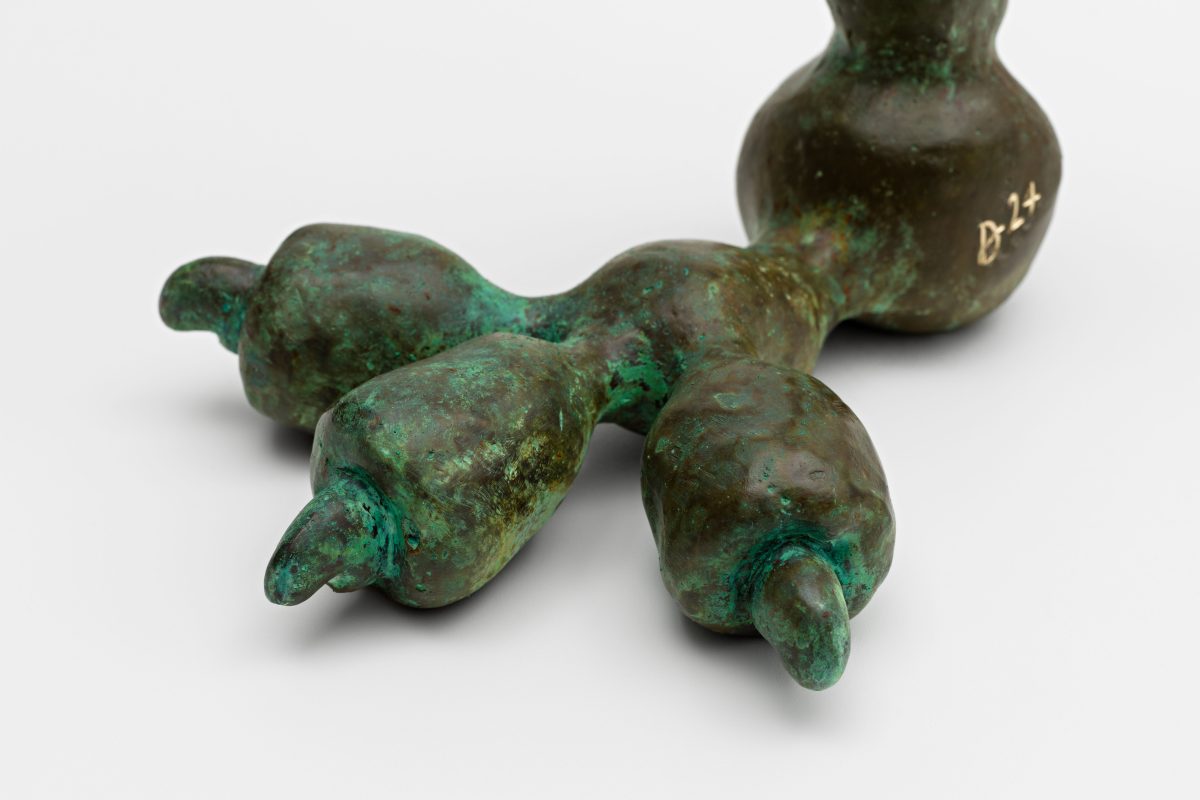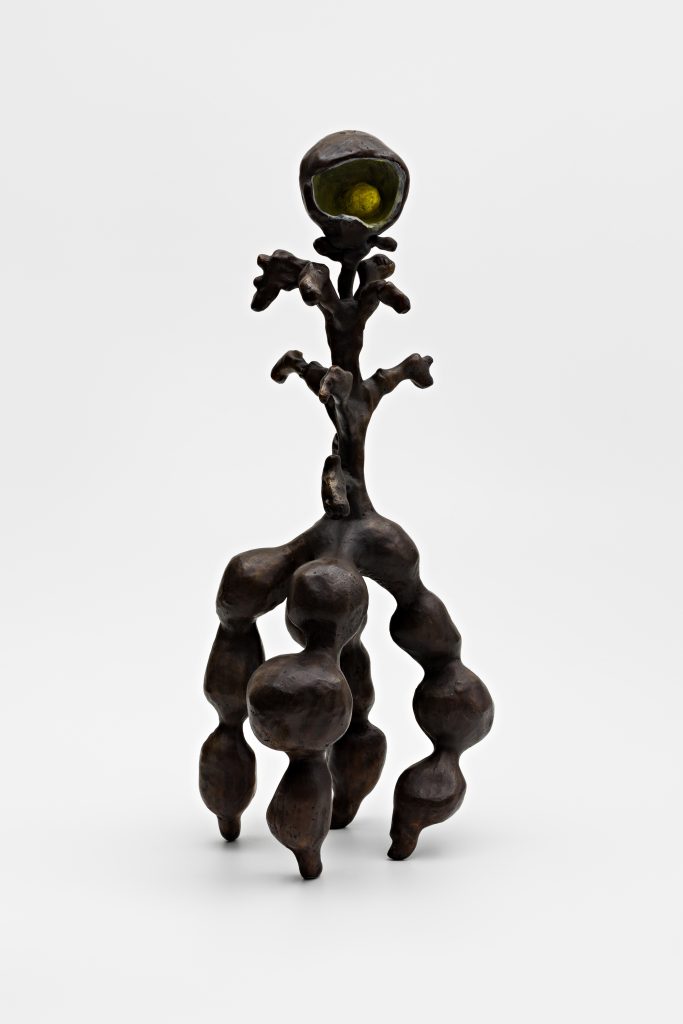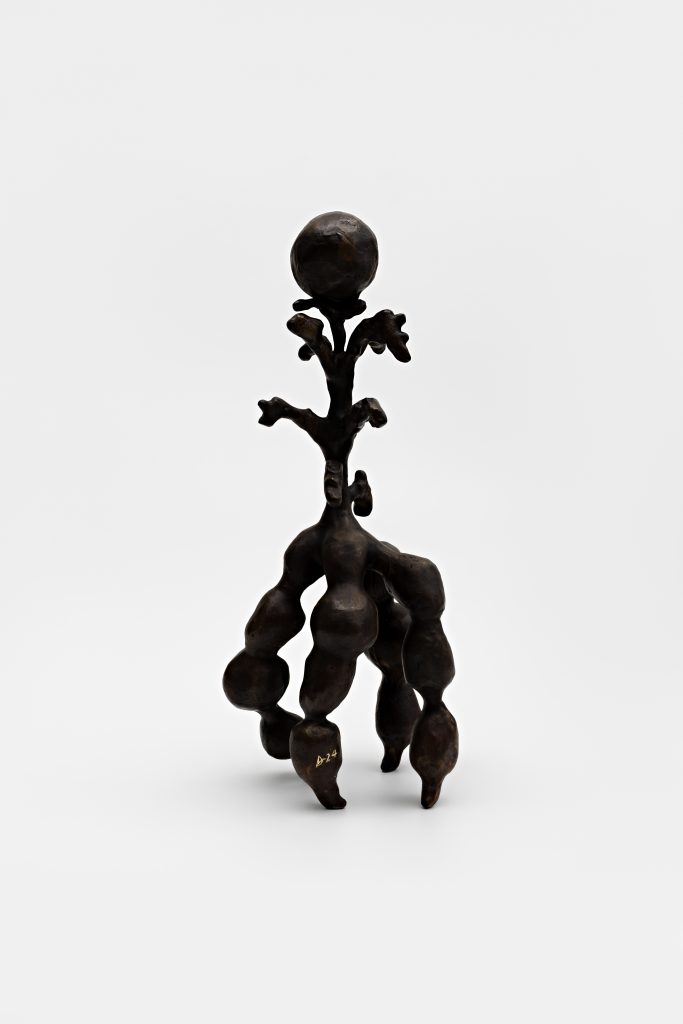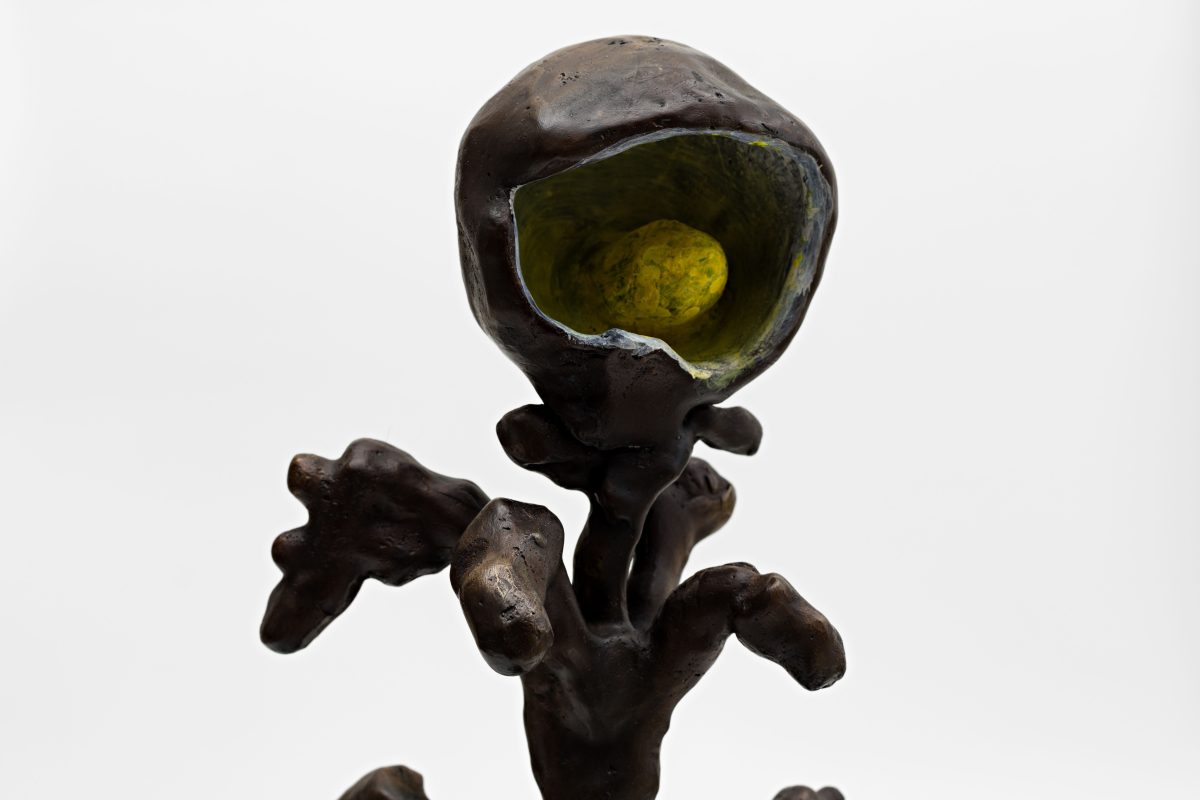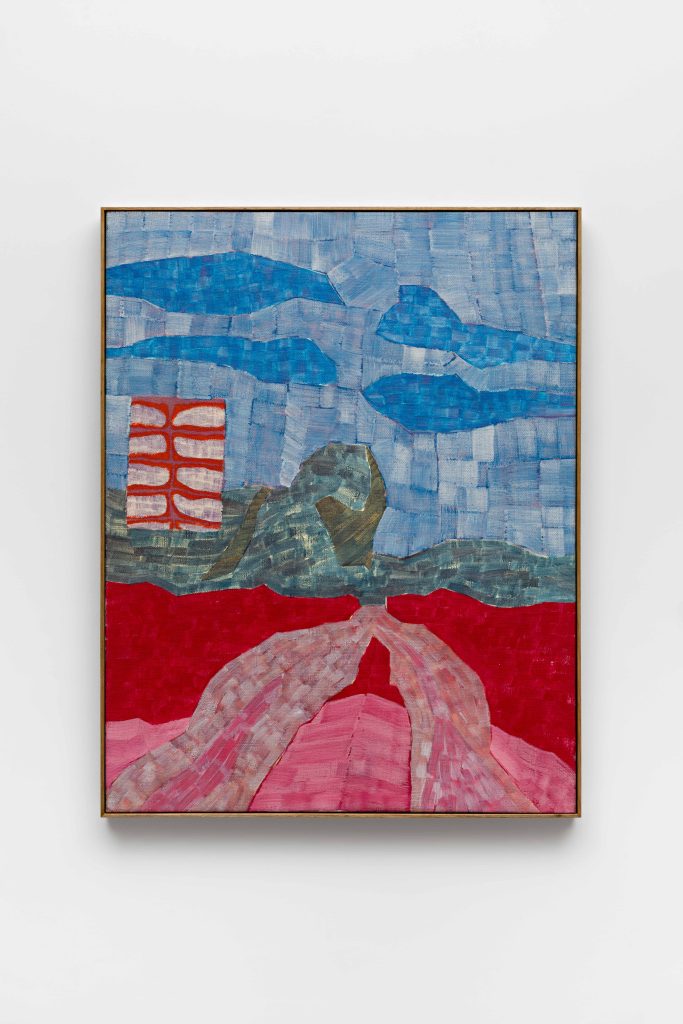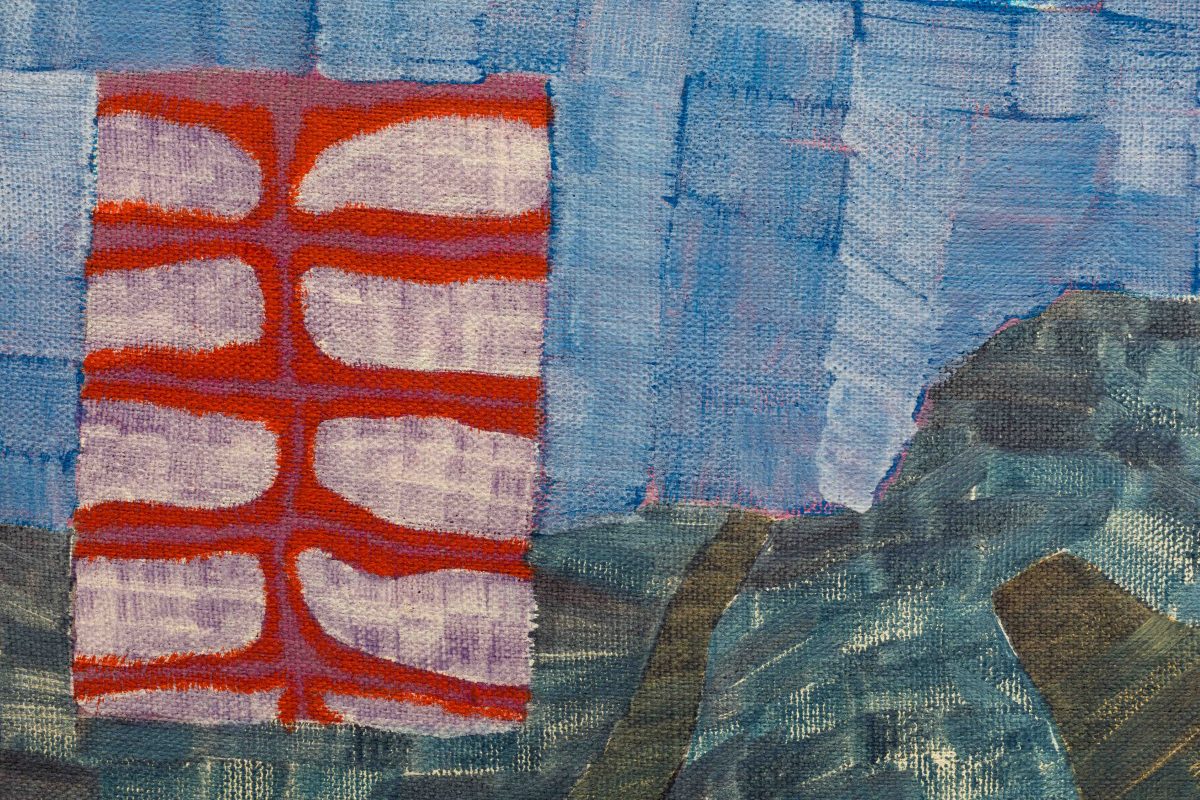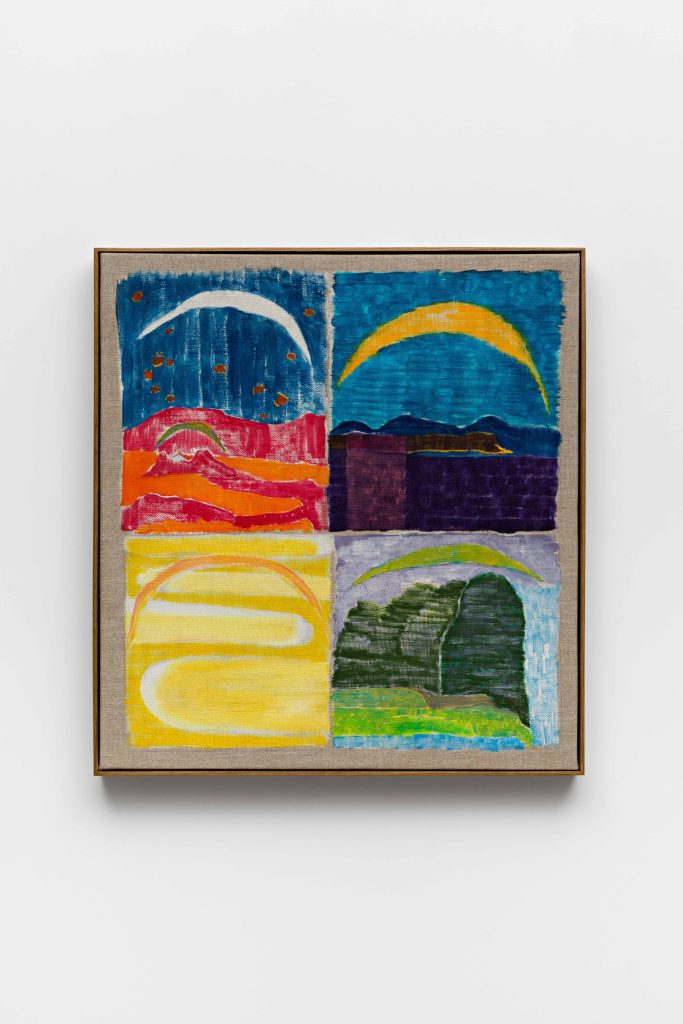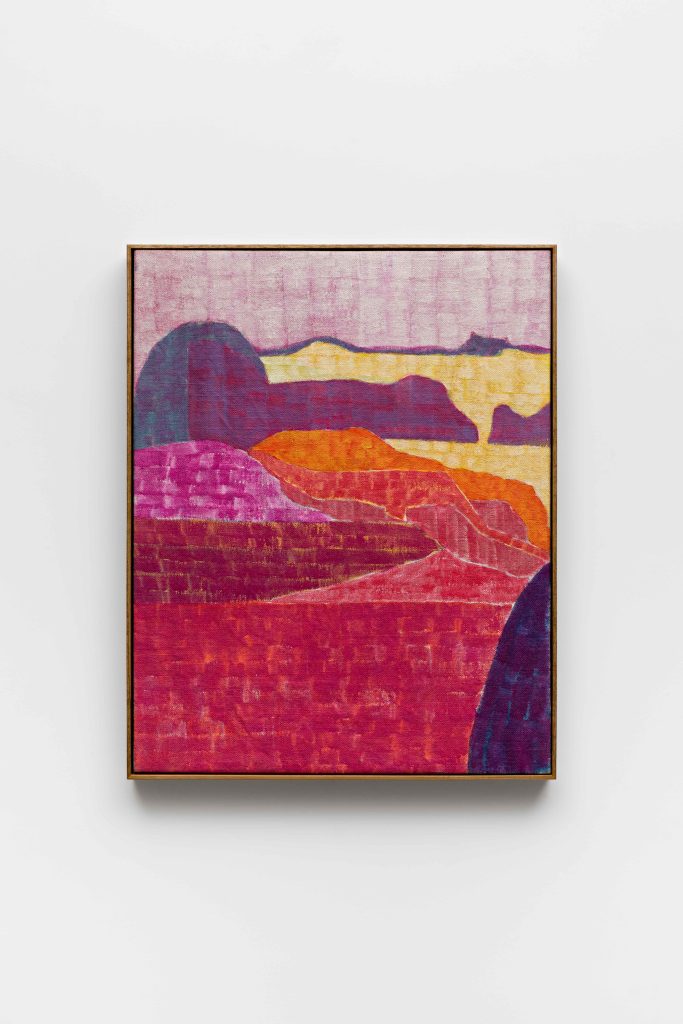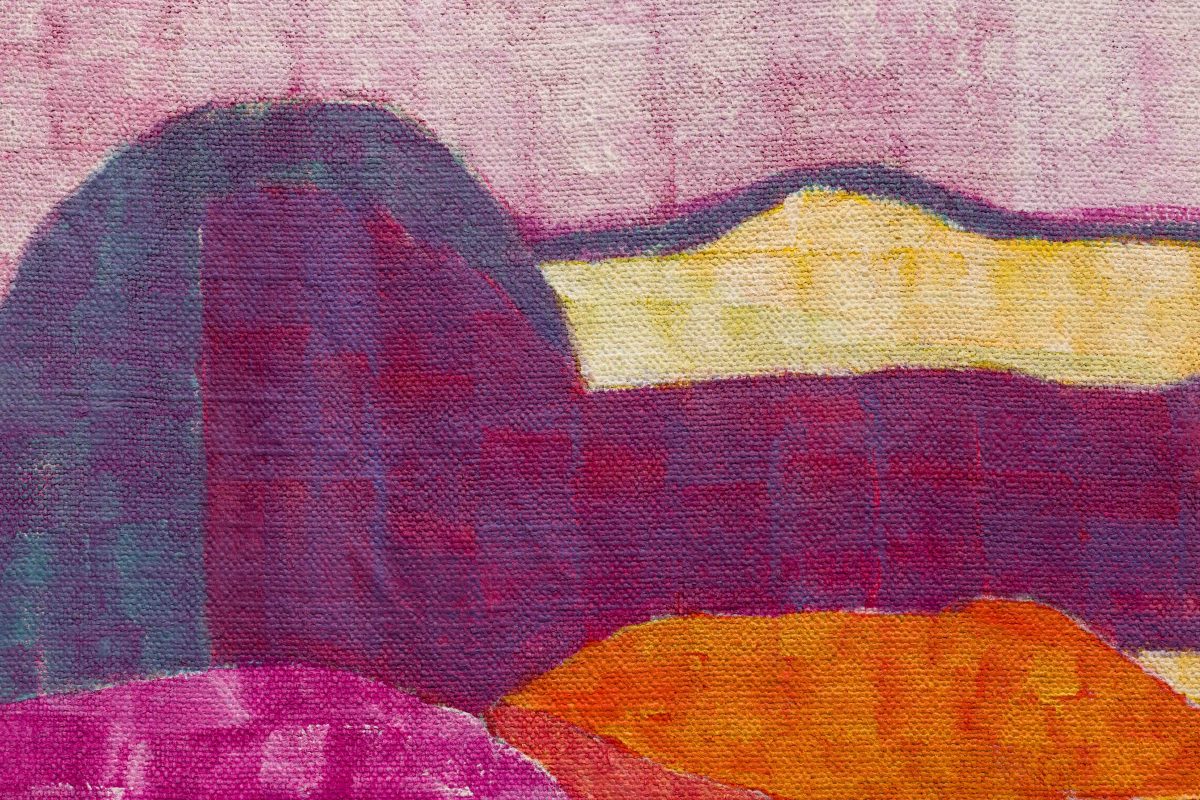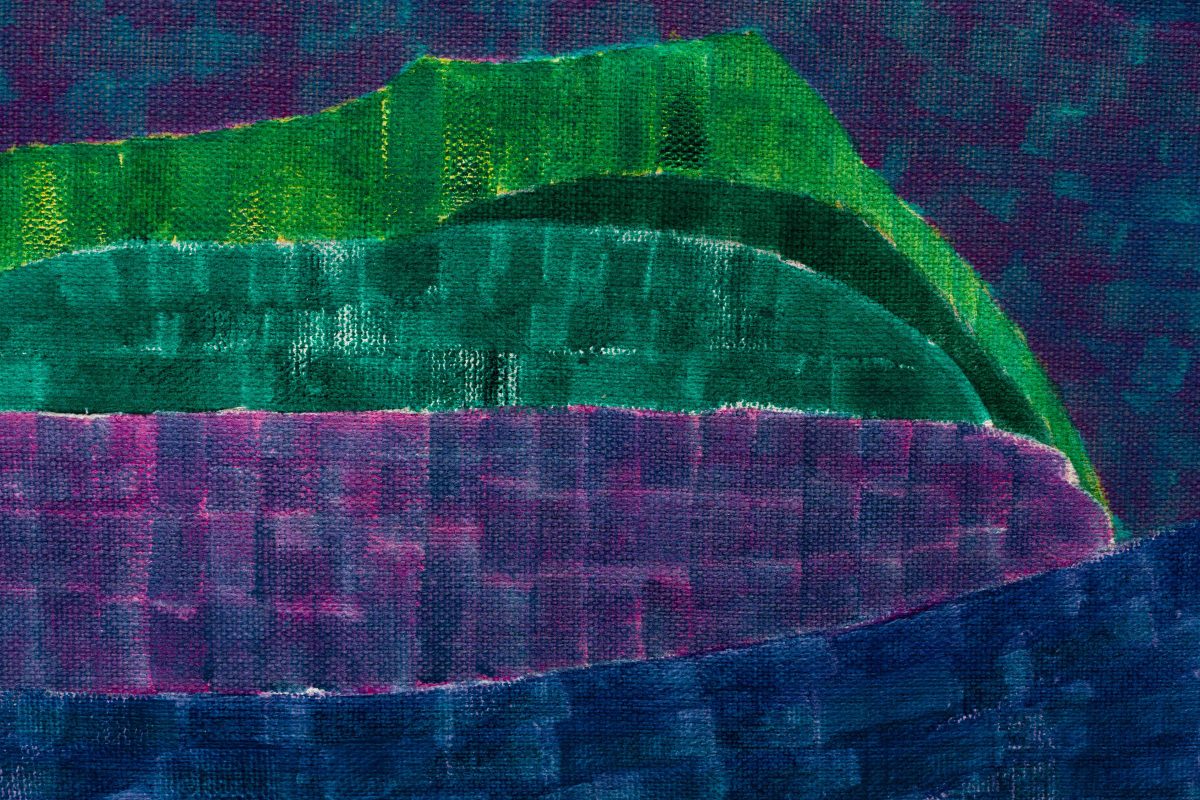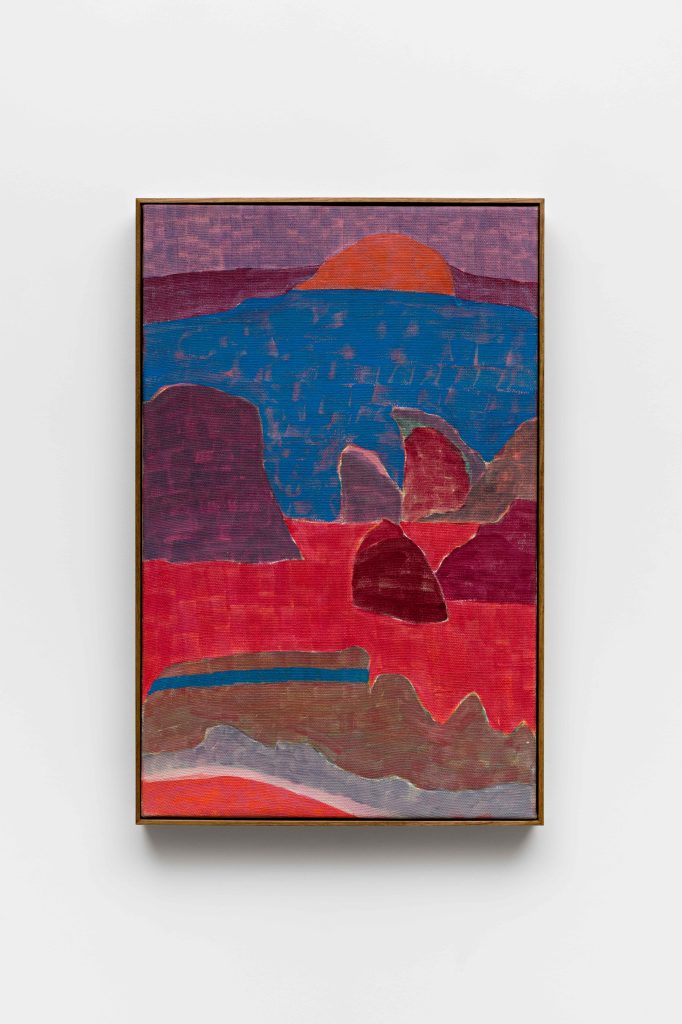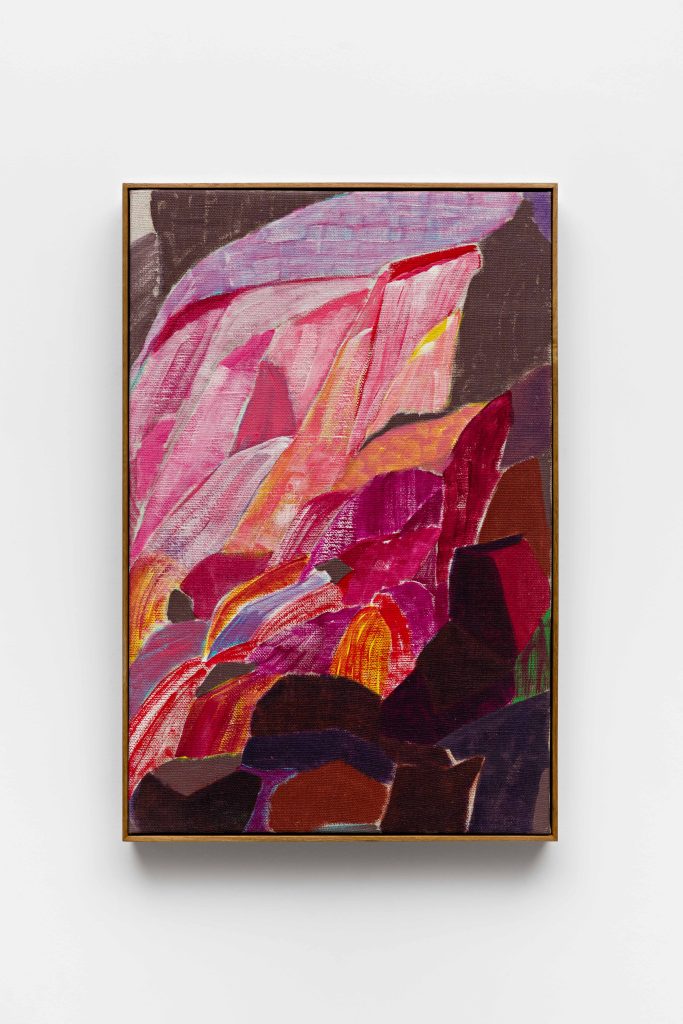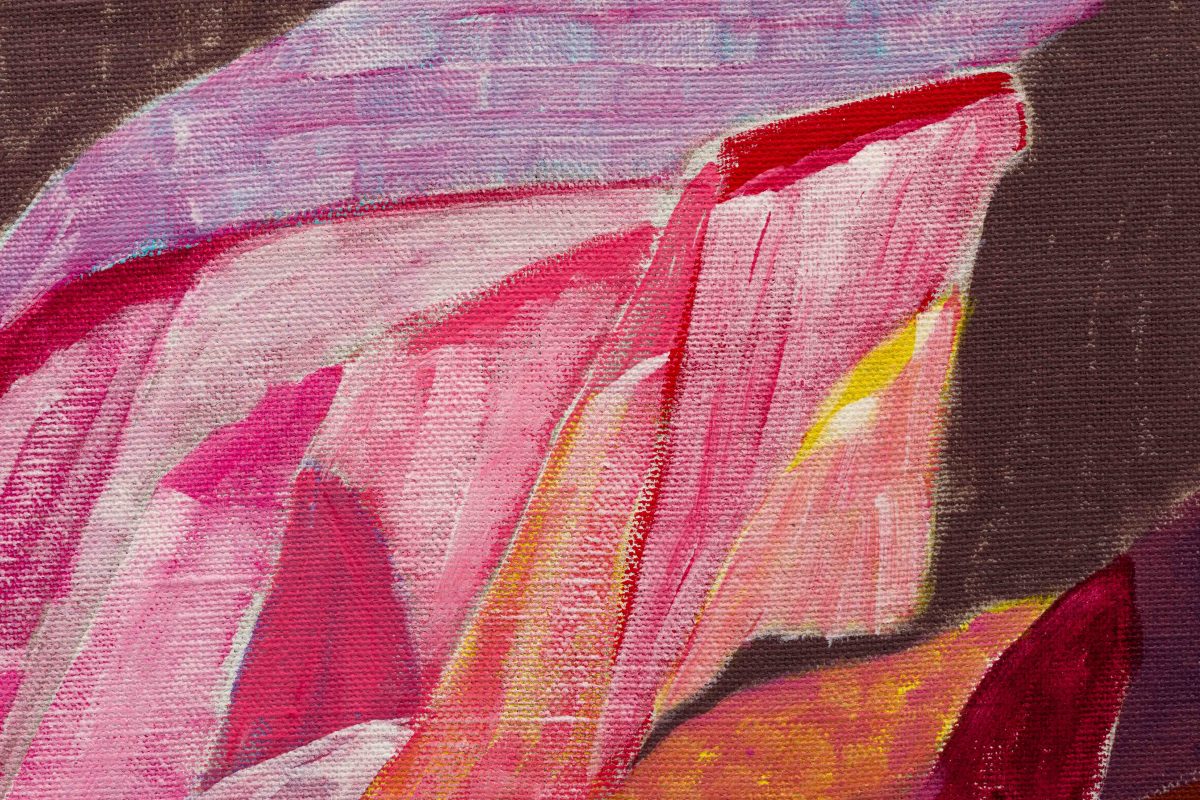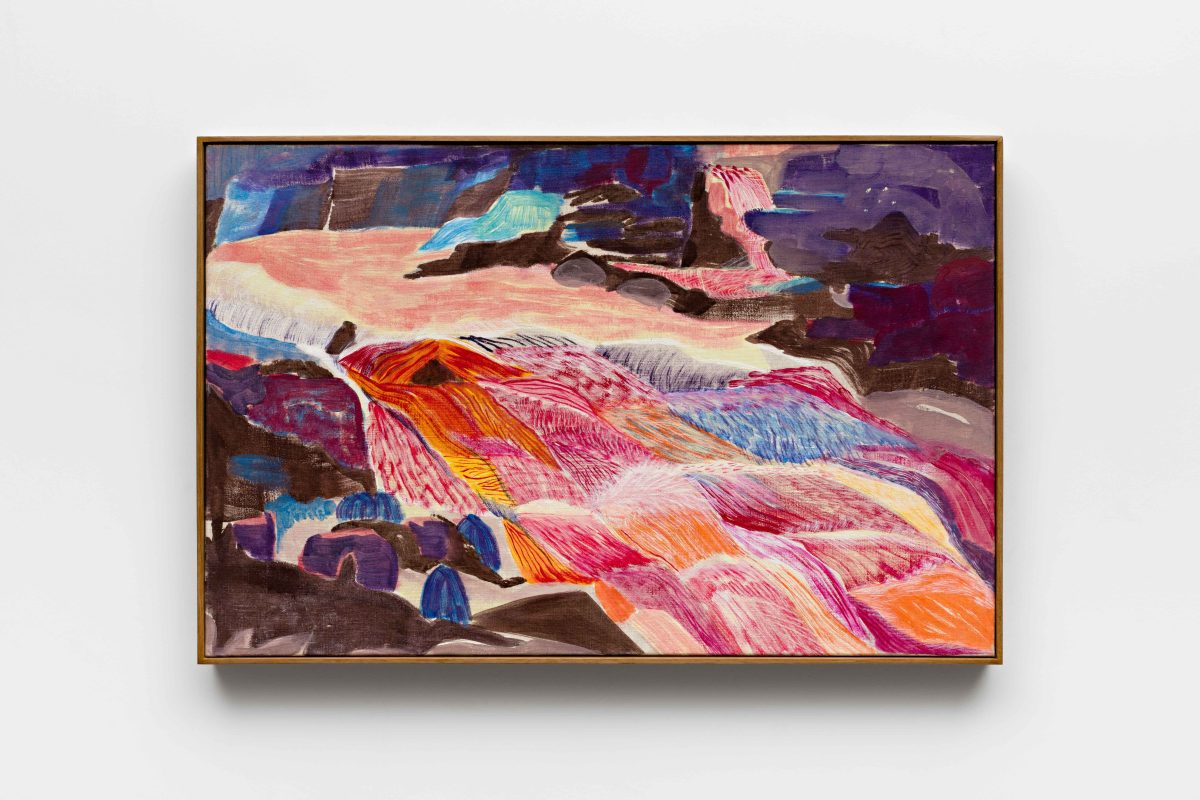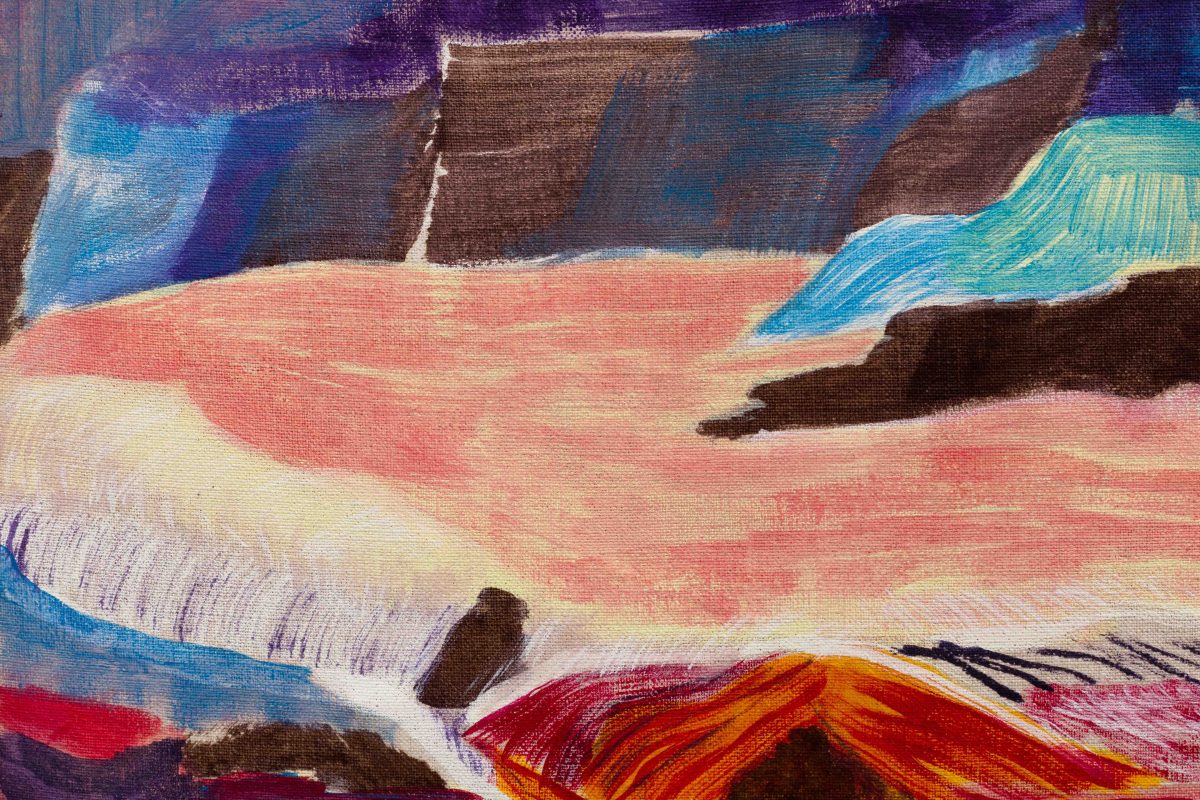
- This event has passed.
kaufmann repetto is proud to present honey honey honey, the first exhibition in New York dedicated to Brazilian artist Diambe (Rio de Janeiro, 1993). With a practice spanning painting, sculpture, performance, textiles, and film, this exhibition features the artist’s latest body of novas mucosas, a series of trans-species entities which take shape in sumptuously patinated bronzes and painted landscapes. Many of the bronzes reveal distinct features of living and perishable materials, like fruits and vegetables, which Diambe uses to mold their initial shapes and architectures. Drawing on traditions from Africa to Brazil, such as lost-wax casting techniques and the mixing of egg tempera, Diambe’s works focus on transformation and the behavior of matter though time, specifically as it relates to their environment and the changing global climate.
The title of the exhibition, honey honey honey, is inspired by the artist’s constant proximity to bees, beeswax, and the scent of honey throughout their creative process. Beeswax has been used for centuries in West African lost-wax casting techniques, and it is becoming increasingly limited in availability to the artisans who keep those traditions, as demand from global trade grows. Beeswax has a melting point of 62°C, which fascinates the artist considering that recent heat index temperatures in Brazil have reached as high as 62.5°C. Both the increasing scarcity of beeswax and the physical reaction it can have to the rapidly changing climate concern the artist and compel their exploration into the material.
In Honeycomb IV pure honey (2024), Diambe induces movement into the sculpture by applying heat to the wax at different stages of the sculpting process. As the molten wax congeals and is cast in bronze, the movement of the dripping matter is caught in time and place, lending a gooey sensuality to the hard bronze, and probing the artist’s ongoing investigation into perishable and imperishable materials, questions of permanence and impermanence.
The melting process also emits an aroma that attracts bees into the artist’s studio. Diambe welcomes them, and as they adapt to coexisting with the swarming life forms, they become attuned to their immediate environment and the sensations instigated by the encounter. The smell of honey, the sound of buzzing wings, and the touch of the insects landing on their skin triggers the artist’s senses and emotions, influencing their creative choices. Realized in bronze, the honeycomb sculptures represent fixed ecosystems that incorporate both environmental and personal reflections.
Many of Diambe’s bronzes also express an articulation of Creole and African-South American fruits and vegetables. Assembling pieces of ginger, turmeric, yams, cashews, and cocoa bark, their process transforms one living thing into another, exploring endless possibilities of new beings. As the assemblages are sculpted into wax, then cast in bronze, materials that are otherwise perishable are rendered imperishable, permanent, claiming their presence in space and power in newformed existence. These new beings the artist calls novas mucosas, which translates to new mucosa. They are chimeras capable of transmitting sensations, archiving emotions, and honing senses of self.
Dreamfruit (2024) depicts a tetrapod figure with bulbous tubers for limbs, standing in an elongated pose as if to confront the viewer. Atop its vertically sculpted spine sits a small, hooded object, a yellow seed sitting inside a white dusted encasing, tempting viewers to get closer to perhaps touch or smell it, like the way a carnivorous plant attracts its prey. Guest host (2024) reveals two disparate forms connected in harmony, the title suggesting that one form, reminiscent of a cashew fruit, may be taking residence inside the other, a shell molded from cocoa bark.
In their paintings, shapes and colors are also linked to sensory attunement, as the artist bears witness to a world whose landscapes are deteriorating. As new, unexpected colors flood their skies signaling atmospheric shifts and transformations, the artist is inspired to interpret what a landscape is freely, honing the sensations that such natural phenomena incite. Attempting to harness these sensations in color, Diambe mixes their own egg tempera to achieve a rich palette, conscious of the medium’s ancient tradition and long-lasting durability.
Fever (2024) portrays a landscape in which the earth’s crust has heated to the brink of ignition. A delta of hot, red and pink brushstrokes springs up into the canvas, meeting at the middle, in dramatic contrast, a swath of blue sky painted with pixelated effect. A singular, orange and white architecture hovers in the picture, a nova mucosa, seeming to traverse the landscape.
With deft artistry and visual sophistication, Diambe’s paintings and sculptures seamlessly integrate traditional art practices with a bold contemporary aesthetic. Activating their surroundings with sumptuous, provocative presence, Diambe’s works serve to uncover a multiplicity of identities, inviting viewers to consider the artist’s position as a Black, Creole, and non-binary artist, the barriers imposed on different aspects of their life, and their authority to redetermine them.
Diambe was born in Rio de Janeiro in 1993; they live and work in São Paulo. They have been the subject of exhibitions at AZB (Pro Helvetia Stipend), Zurich (2023); Quadra, São Paulo (2022); Centro Cultural São Paulo (CCSP), São Paulo (2021); and Despina, Rio de Janeiro (2019). Their work has also been exhibited at SESC Belenzinho, São Paulo (2022); Instituto Itaú Cultural, São Paulo (2023); Isla Flotante, Buenos Aires (2023); Museu de Arte de São Paulo (MASP), São Paulo (2022); Museu de Arte do Rio (MAR), SESC São José do Rio Preto, SESC Sorocaba, Instituto Moreira Salles (2023); Museu de Arte do Rio (MAR), Rio de Janeiro (2020); Museu de Arte do Rio (MAR), Rio de Janeiro (MAR), Rio de Janeiro (2020); Tanya Bonakdar Gallery, New York (2020); Paço Imperial, Rio de Janeiro (2019); Escola de Artes Visuais Parque Lage, Rio de Janeiro (2019). They participated in artist residencies at AZB, ProHelvetia Stipend, Zurich (2023); Pivô Satellite, São Paulo (2021); Helmet + Museum of Modern Art, Rio de Janeiro (2020); RCT, Rio de Janeiro (2019); and Despina, Rio de Janeiro (2018). Their work is held in the permanent collections of São Paulo Museum of Art (MASP); Pinacoteca de São Paulo; Museu de Arte do Rio (MAR), among others.

